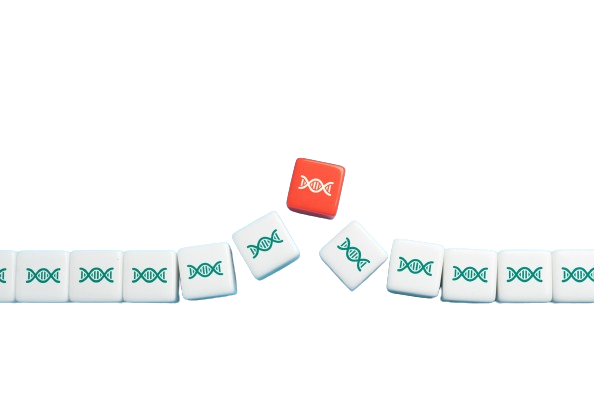By Sarah Taylor, PharmD
Ready-made cream vehicles serve a wide variety of functions. They can be used for topical application such as in the case of cosmetic creams or preparations for acne or rosacea, they can be used for local transdermal delivery, such as in the case of transdermal preparations for conditions such as osteoarthritis of the knee, or they may be utilized transdermally for systemic use, for example, in cases in which the drug is destroyed when taken via the oral route or in which the oral route is not an option for a given patient.
Achieving systemic absorption from a topically applied active pharmaceutical ingredient (API) can be difficult. Skin is a multilayered organ that has evolved to protect against infectious agents, chemicals, and allergens and to maintain homeostasis in the body.
Transdermal creams must do the work of pushing APIs through a barrier designed to keep things out. Scientists have long studied methods to improve our ability to bypass this layer and increase the feasibility of systemic treatments applied transdermally in both human and veterinary patients.
What influences drug delivery through the skin?
Many factors can influence a given API’s potential to move through the skin. Things that generally suggest good chances of transdermal absorption include:
- low molecular weight
- low melting point
- solubility in both oil and water (a low octanol/water partition coefficient)2
These are factors that we cannot alter about an API, we can however, ensure that we use a base that is designed to enhance penetration through the skin as much as possible to give our API, regardless of characteristics, the best chance of transdermal penetration. Vehicle composition can significantly impact the degree of transdermal penetration of a given API. When designing transdermal vehicles ingredient selection is of the utmost importance.
What makes Pentravan and Pentravan Plus optimal vehicles for transdermal delivery?
Multiple studies have confirmed the ability of Pentravan/Pentravan Plus to enhance drug delivery through the skin. In one in vitro penetration study, Pentravan was found to offer enhanced penetration for testosterone and ketoprofen as compared to a traditional Pluronic Lecithin Organogel (PLO) type vehicle, which has previously been treated as the standard in transdermal penetration.3,4 In this study, the formulations in Pentravan offered 3.8 and 1.7 fold greater penetration for ketoprofen and testosterone respectively as compared to the PLO vehicle. The transdermal penetration power of Pentravan is multifaceted, but some key ingredients that play a role include:
- Isopropyl Myristate
- Isopropyl Palmitate
- Lecithin
Isopropyl Myristate: Partitioning into the stratum corneum and diffusion within the stratum corneum (the outer layer of the skin) are the rate-limiting step for many APIs applied for transdermal use.5 Isopropyl myristate works to disrupt the stratum corneum lipid membranes and thereby help incorporate the active ingredient into the subcutaneous lipid matrix.6,7
Isopropyl Palmitate: While isopropyl palmitate is often used in topical products as an emollient and thickening agent, in vitro studies of isopropyl palmitate at a wide range of concentrations have also found significantly increased flux of tested drugs correlated with increasing isopropyl palmitate.8,9
Lecithin: Lecithin has a long history of use as an ingredient to solubilize and enhance the penetration of APIs.10 It is thought that lecithin works both by solubilizing the API and by disrupting the intercellular lipid structure, allowing API to more easily pass through the stratum corneum.11
Why does vehicle choice matter?
Ingredient selection and vehicle choice are critical for transdermal penetration and can affect the extent to which an API applied for transdermal use is absorbed through the skin. The ingredients in Pentravan and Pentravan Plus were selected not only to confer pharmaceutical elegance but also to offer ingredients with demonstrated penetration-enhancing effects.
You can read more about Pentravan here. If you have any questions, just reach out to us!
Sources:
- Kanwar AJ. Skin barrier function. Indian J Med Res. 2018;147(1):117-118. doi:10.4103/0971-5916.232013
- Alkilani AZ, McCrudden MT, Donnelly RF. Transdermal Drug Delivery: Innovative Pharmaceutical Developments Based on Disruption of the Barrier Properties of the stratum corneum. Pharmaceutics. 2015;7(4):438-470. Published 2015 Oct 22. doi:10.3390/pharmaceutics7040438
- Lehman Paul A, Raney Sam G. In Vitro Percutaneous Absorption of Ketoprofen and Testosterone: Comparison of Pluronic Lecithin Organogel vs Pentravan Cream. 2012. 16(3): 248-252.
- Polonini H, Brandao M, Ferreira A, Ramos C, Raposo N. Evaluation of Percutaneous Absorption Performance for Human Female Sexual Steroids into Pentravan Cream. IJPC. 2014. 18(4): 332-240.
- Lane M. Skin penetration enhancers. International Journal of Pharmaceutics. 2013; 446(1-2): 12-21.
- Engelbrecht T, Demé B, Dobner B, Neubert R. Study of the Influence of the Penetration Enhancer Isopropyl Myristate on the Nanostructure of Stratum Corneum Lipid Model Membranes Using Neutron Diffraction and Deuterium Labelling. Skin Pharmacol Physiol. 2012; 25: 200-207.
- Liston S, Rivas P, Sakdiset P, See G, Arce F. Chemical penetration enhancers for topically-applied vitamin C and its derivatives: a systematic review. Cosmetics. 2022; 9 (4): 85. https://doi.org/10.3390/cosmetics9040085
- Guo H, Liu Z, Li J, Nie S, Pan W. Effects of isopropyl palmitate on the skin permeation of drugs. Biological and Pharmaceutical Bulletin. 2006; 29(100: 2324-2326.
- Ruan J, Wan X, Quan P, Liu C, Fang L. Investigation of Effect of Isopropyl Palmitate on Drug Release from Transdermal Patch and Molecular Dynamics Study. AAPS PharmSciTech. 2019;20(5):174. Published 2019 Apr 25. doi:10.1208/s12249-019-1370-7
- Valenta C, Wanka M, Heidlas J. Evaluation of novel soya-lecithin formulations for dermal use containing ketoprofen as a model drug. J Control Release. 2000;63(1-2):165-173. doi:10.1016/s0168-3659(99)00199-6
- Bently M, Kedor E, Vianna R, Collett J. The influence of lecithin and urea on the in vitro permeation of hydrocortisone acetate through skin from hairless mouse. International Journal of Pharmaceutics. 1997; 146(2): 255-262.





